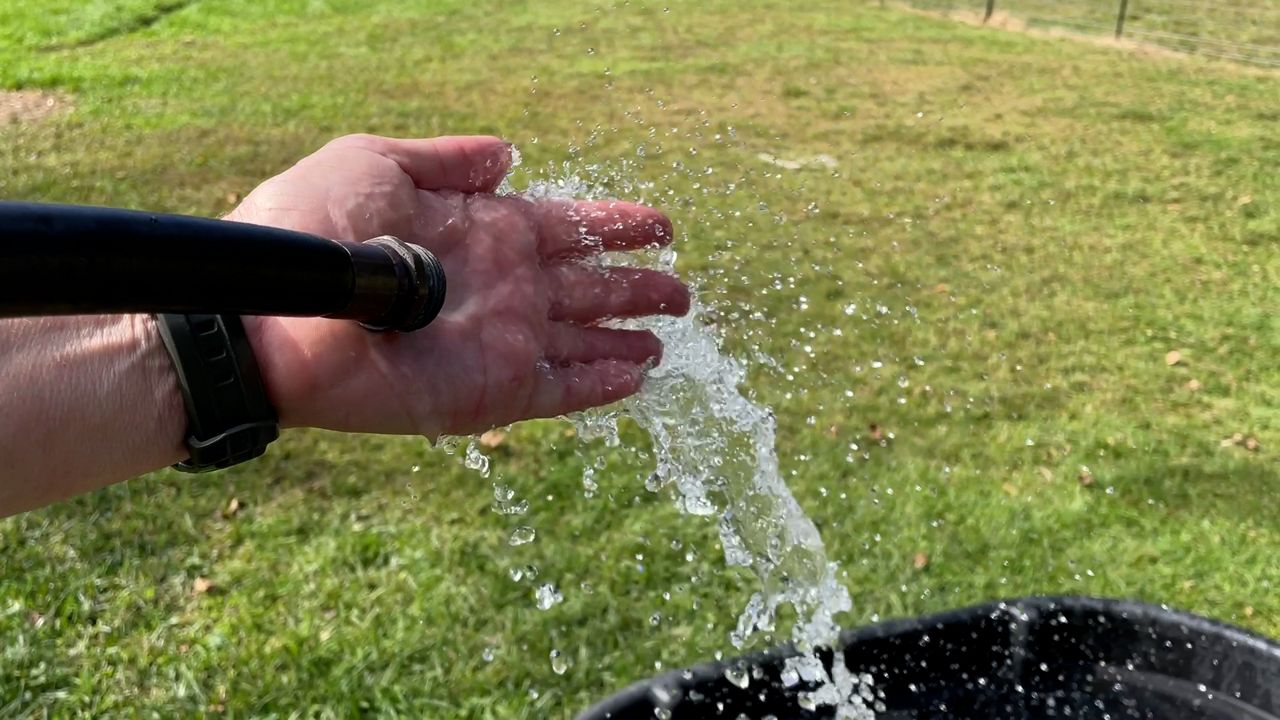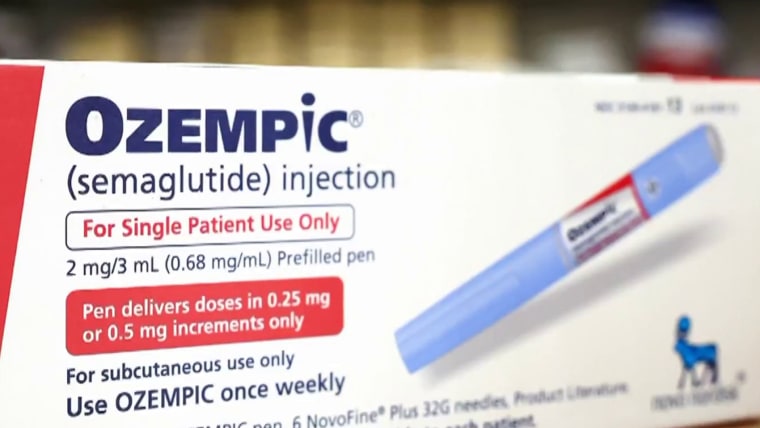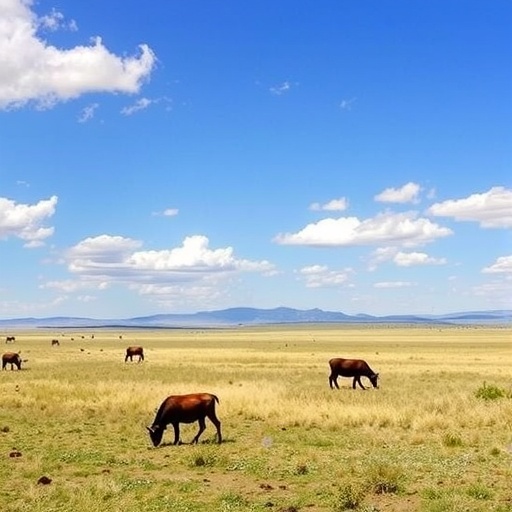Conservation groups buy 668 acres of South Valley farmland – SanBenito.com | Hollister, San Juan Bautista, CA – SanBenito.com

Report on the Acquisition of Pajaro River Valley Properties for Sustainable Development
1.0 Executive Summary
A coalition of conservation organizations, led by the Peninsula Open Space Trust (POST), has acquired three interconnected properties totaling over 600 acres in the Upper Pajaro River Valley. The $7.8 million acquisition aims to integrate environmental restoration with sustainable agriculture, directly addressing multiple United Nations Sustainable Development Goals (SDGs). This initiative focuses on enhancing climate resilience, protecting biodiversity, ensuring clean water, and supporting sustainable food production systems, thereby creating a model for land use that benefits both the environment and local communities.
2.0 Project Overview
2.1 Acquired Properties
- Ojeda Ranch: 318 acres in San Benito County, purchased for approximately $4.8 million. Currently used for hay and vegetable row crops.
- Bloomfield South Farm: 185 acres in Santa Clara County, purchased for $2.4 million. This property allows for riparian restoration planning along the Pajaro River.
- Gonzales Ranch: 165 acres straddling both counties, purchased for $667,000. Currently used for regenerative livestock grazing.
2.2 Key Stakeholders and Partnerships (SDG 17)
This project exemplifies SDG 17: Partnerships for the Goals, through a multi-stakeholder collaboration. Key partners include:
- Peninsula Open Space Trust (POST)
- The Nature Conservancy
- Santa Clara Valley Open Space Authority (OSA)
- San Benito Agricultural Land Trust (SBALT)
- California Wildlife Conservation Board
3.0 Alignment with Sustainable Development Goals
3.1 SDG 15: Life on Land
The project is fundamentally aligned with SDG 15 by focusing on the protection and restoration of a vital regional ecosystem. The primary objective is to restore the natural landscape and ecological functions of the Soap Lake floodplain and Pajaro River watershed. This will enhance regional biodiversity and strengthen natural habitats for native wildlife, directly contributing to the goal of halting biodiversity loss.
3.2 SDG 13: Climate Action
In alignment with SDG 13, the initiative is a direct response to climate change impacts. The region’s historical land alteration has reduced its resilience to severe weather. By restoring the floodplain’s natural ability to absorb heavy rains, the project aims to build climate resilience and mitigate the risk of extreme flooding events, such as the one in 2023 which caused an estimated $790 million in damages.
3.3 SDG 2: Zero Hunger
The project supports SDG 2 by ensuring the continuation of sustainable agriculture on these lands. The Pajaro River watershed sustains a regional agricultural economy valued at nearly $1 billion annually. The plan is to develop land use programs that integrate modern restoration techniques with productive, sustainable agriculture, including row cropping and regenerative grazing, securing long-term food production.
3.4 SDG 6: Clean Water and Sanitation
This initiative contributes to SDG 6 by protecting the Pajaro River watershed, a vital source of water. For 150 years, human intervention has disrupted the river’s natural functions. The planned restoration will improve the ecological health of the watershed, which is critical for managing water resources sustainably and mitigating flood risks that impact water quality and availability for downstream communities.
3.5 SDG 11: Sustainable Cities and Communities
By addressing upstream land management, the project directly supports SDG 11. The restoration of the Soap Lake floodplain is a nature-based solution to reduce flood risks for downstream communities, protecting housing, businesses, and infrastructure from the increasing frequency and severity of storm events.
4.0 Future Outlook
POST and its partners will now engage in a comprehensive restoration and land use planning process. The goal is to create a resilient landscape that combines a mosaic of productive agricultural lands and restored natural habitats. This forward-looking approach serves as an enduring legacy, demonstrating how environmental conservation and sustainable agriculture can work in concert to achieve critical Sustainable Development Goals for the benefit of the community, economy, and environment.
Analysis of Sustainable Development Goals in the Article
1. Which SDGs are addressed or connected to the issues highlighted in the article?
The article highlights several issues that connect to multiple Sustainable Development Goals. The analysis identifies the following SDGs as relevant:
- SDG 2: Zero Hunger: The article focuses on the purchase of agricultural properties for “sustainable agriculture,” “active row crop agriculture,” and “livestock grazing.” This directly relates to ensuring sustainable food production systems.
- SDG 6: Clean Water and Sanitation: The Pajaro River watershed is described as a “vital water source,” and the project involves “riparian restoration planning” and improving the river’s “ecological function,” which are central to protecting water-related ecosystems.
- SDG 11: Sustainable Cities and Communities: A key motivation for the project is to mitigate “flood risks to downstream communities.” The article notes that past flooding caused significant damage to “housing and businesses,” linking the restoration efforts to making communities safer and more resilient.
- SDG 13: Climate Action: The article explicitly mentions building “climate resilience” and notes that the watershed’s ecological problems are “exacerbated by climate change.” The project aims to make the landscape more resilient to “more severe storms and flood events.”
- SDG 15: Life on Land: The core of the project is “environmental restoration” of a “vital regional ecosystem.” The goals include enhancing “biodiversity,” protecting natural habitats, and restoring the land’s natural functions, which are all key components of SDG 15.
- SDG 17: Partnerships for the Goals: The article emphasizes the collaborative nature of the project, listing partners such as the Peninsula Open Space Trust (POST), The Nature Conservancy, Santa Clara Valley Open Space Authority, and the San Benito Agricultural Land Trust. This multi-stakeholder approach is the essence of SDG 17.
2. What specific targets under those SDGs can be identified based on the article’s content?
Based on the article’s discussion of the project’s goals and actions, the following specific SDG targets can be identified:
- Target 2.4: “By 2030, ensure sustainable food production systems and implement resilient agricultural practices that increase productivity and production, that help maintain ecosystems, that strengthen capacity for adaptation to climate change, extreme weather, drought, flooding and other disasters and that progressively improve land and soil quality.”
- Justification: The article states the project’s vision is for “sustainable agriculture alongside natural resources” and mentions the lands are used for “active row crop agriculture or livestock grazing.” The goal to explore “water and land use challenges so that sustainable agriculture can continue to thrive” directly aligns with this target.
- Target 6.6: “By 2020, protect and restore water-related ecosystems, including mountains, forests, wetlands, rivers, aquifers and lakes.”
- Justification: The project is centered on the “Upper Pajaro River Valley and the Soap Lake floodplain.” The article details plans for “riparian restoration planning along more than a half-mile stretch of the Pajaro River” to restore the river’s “natural functions.”
- Target 11.5: “By 2030, significantly reduce the number of deaths and the number of people affected and substantially decrease the direct economic losses relative to global gross domestic product caused by disasters, including water-related disasters, with a focus on protecting the poor and people in vulnerable situations.”
- Justification: The article highlights that the Soap Lake floodplain “absorbs heavy seasonal rains, helping mitigate flood risks to downstream communities.” It also quantifies past damage from flooding (“$790 million in damage to agriculture, housing and businesses”), indicating that a primary goal of the restoration is to reduce future economic and social impacts from floods.
- Target 13.1: “Strengthen resilience and adaptive capacity to climate-related hazards and natural disasters in all countries.”
- Justification: The project is explicitly framed as a response to challenges “exacerbated by climate change.” The stated goal is to “generate climate resilience benefits for our community” and make the landscape “more resilient overall to the impacts of more severe storms and flood events.”
- Target 15.1: “By 2020, ensure the conservation, restoration and sustainable use of terrestrial and inland freshwater ecosystems and their services, in particular forests, wetlands, mountains and drylands, in line with obligations under international agreements.”
- Justification: The article states the properties were purchased for “environmental restoration” to support a “mosaic of agricultural and natural lands that benefits biodiversity.” The focus on restoring the Pajaro River watershed and its floodplain directly addresses the restoration of inland freshwater ecosystems.
- Target 17.17: “Encourage and promote effective public, public-private and civil society partnerships, building on the experience and resourcing strategies of partnerships.”
- Justification: The article details a partnership between multiple conservation organizations, including POST, The Nature Conservancy, Santa Clara Valley Open Space Authority, and San Benito Agricultural Land Trust, which collectively acquired the properties. This collaboration is a clear example of a multi-stakeholder partnership for sustainable development.
3. Are there any indicators mentioned or implied in the article that can be used to measure progress towards the identified targets?
The article provides several quantitative and qualitative points that can serve as indicators to measure progress towards the identified targets:
- Area of land under sustainable management (Targets 2.4, 15.1): The article specifies the total area purchased is “more than 600 acres” (185-acre Bloomfield South Farm, 165-acre Gonzales Ranch, and 318-acre Ojeda Ranch). The successful implementation of sustainable agriculture and restoration on this acreage is a direct indicator of progress.
- Financial resources mobilized (Target 17.17): The total cost of the land acquisition is stated as “about $7.8 million.” This figure serves as an indicator of the financial commitment mobilized through the partnership.
- Length of river restored (Target 6.6): The plan to pursue “riparian restoration planning along more than a half-mile stretch of the Pajaro River” provides a specific, measurable indicator for ecosystem restoration efforts.
- Reduction in economic losses from flooding (Target 11.5): The article establishes a baseline by mentioning the “estimated $790 million in damage” from the 2023 floods. Future progress could be measured by a reduction in economic losses in the region during similar storm events after the restoration is complete.
- Number of active partners (Target 17.17): The article lists at least five key partners (POST, The Nature Conservancy, Santa Clara Valley Open Space Authority, San Benito Agricultural Land Trust, Wildlife Conservation Board), which serves as an indicator of the scale of the partnership.
- Enhanced biodiversity (Target 15.1): While not quantified, the goal to “enhance the region’s biodiversity” is a key qualitative indicator. Progress could be measured through ecological surveys of native wildlife and plant species in the restored areas over time.
4. Summary Table of SDGs, Targets, and Indicators
| SDGs | Targets | Indicators Identified in the Article |
|---|---|---|
| SDG 2: Zero Hunger | 2.4: Ensure sustainable food production systems and implement resilient agricultural practices. | Total acreage (over 600 acres) managed for sustainable agriculture (row crops and livestock grazing). |
| SDG 6: Clean Water and Sanitation | 6.6: Protect and restore water-related ecosystems. | Length of river undergoing restoration (over a half-mile of the Pajaro River); Improved ecological function of the Soap Lake floodplain. |
| SDG 11: Sustainable Cities and Communities | 11.5: Significantly reduce economic losses and people affected by water-related disasters. | Reduction in economic losses from flooding compared to the $790 million baseline from 2023. |
| SDG 13: Climate Action | 13.1: Strengthen resilience and adaptive capacity to climate-related hazards. | Implementation of land use programs that generate climate resilience benefits for the community. |
| SDG 15: Life on Land | 15.1: Ensure the conservation and restoration of terrestrial and inland freshwater ecosystems. | Total area of land acquired for conservation and restoration (over 600 acres); Enhancement of regional biodiversity. |
| SDG 17: Partnerships for the Goals | 17.17: Encourage and promote effective public, public-private and civil society partnerships. | Number of collaborating organizations (at least 5 mentioned); Total investment mobilized through the partnership ($7.8 million). |
Source: sanbenito.com

What is Your Reaction?
 Like
0
Like
0
 Dislike
0
Dislike
0
 Love
0
Love
0
 Funny
0
Funny
0
 Angry
0
Angry
0
 Sad
0
Sad
0
 Wow
0
Wow
0



















































.jpg.webp?itok=0ZsAnae9#)


























